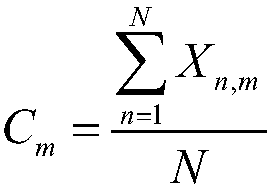Fast global K-means clustering method of using OpenCL (Open Computing Language) acceleration
A technology of K-means and clustering method, which is applied in the field of data processing, can solve the problems of unportable code, limited application range, and inability to parallelize acceleration, etc., and achieve the effects of overcoming poor portability, saving storage space, and increasing load
- Summary
- Abstract
- Description
- Claims
- Application Information
AI Technical Summary
Problems solved by technology
Method used
Image
Examples
Embodiment Construction
[0034] The present invention will be further described below in conjunction with the accompanying drawings.
[0035] The invention utilizes OpenCL hardware equipment, an open computing language, and adopts a fast global K-means clustering algorithm to realize.
[0036] refer to figure 1 , further describe the implementation steps of the present invention.
[0037] Step 1, read in the dataset and the total number of clusters.
[0038] Read in the data set stored in a two-dimensional matrix. The rows of the matrix represent the number of data, and the columns represent the attributes of the data.
[0039] Read in the total number of clusters.
[0040] Step 2, transpose the data set of the two-dimensional matrix.
[0041] Copy the two-dimensional matrix in the data set to the global memory of the hardware device.
[0042] Each thread is responsible for a data point in the two-dimensional matrix of the data set, calculates the index of the data point of each thread in the mat...
PUM
 Login to View More
Login to View More Abstract
Description
Claims
Application Information
 Login to View More
Login to View More - R&D
- Intellectual Property
- Life Sciences
- Materials
- Tech Scout
- Unparalleled Data Quality
- Higher Quality Content
- 60% Fewer Hallucinations
Browse by: Latest US Patents, China's latest patents, Technical Efficacy Thesaurus, Application Domain, Technology Topic, Popular Technical Reports.
© 2025 PatSnap. All rights reserved.Legal|Privacy policy|Modern Slavery Act Transparency Statement|Sitemap|About US| Contact US: help@patsnap.com



